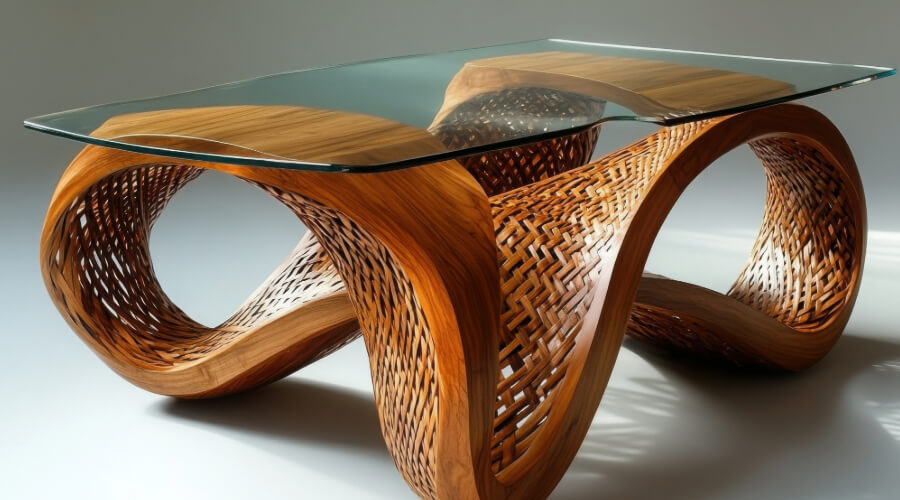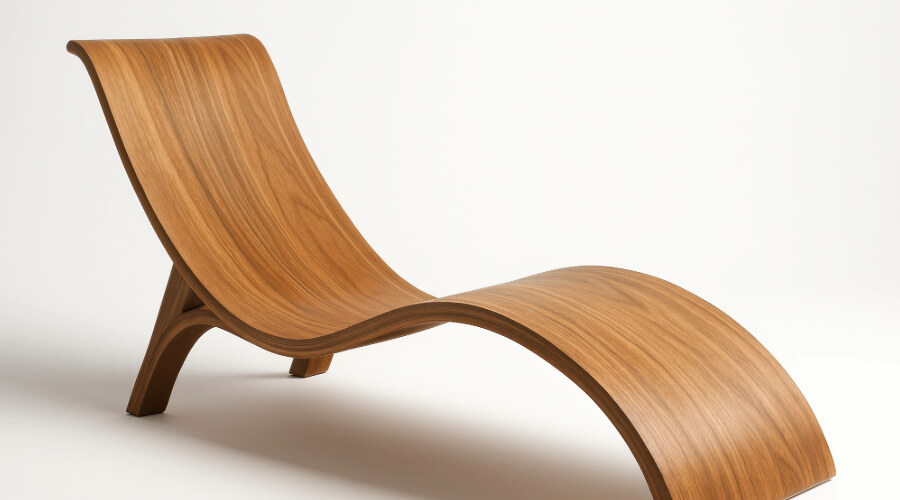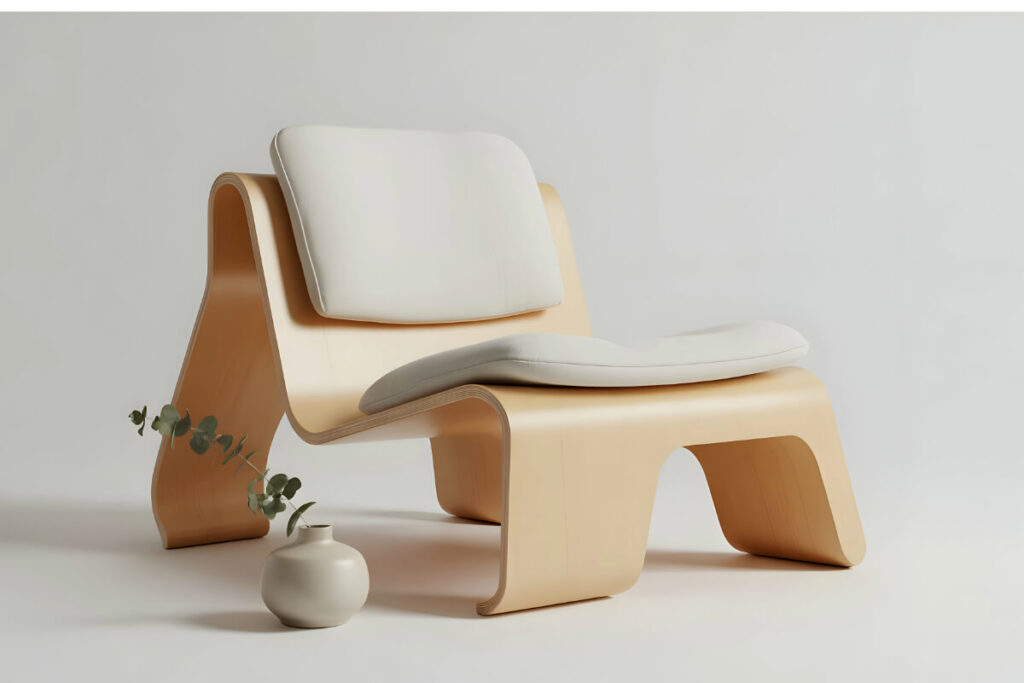In recent years, our homes have been transforming from cold, geometric spaces into warm sanctuaries where every line invites us to unwind. This wave of change carries with it a trend that’s altering not just our interior aesthetics, but also the impact on our health and emotional wellbeing.
The return of curved forms in furniture design has become one of 2025’s most prominent interior trends. Specialists note that this isn’t merely a stylistic choice – it’s a response to our fundamental human need to reconnect with nature’s organic forms. When sharp corners give way to gentle curves, our living spaces begin to breathe differently, creating an atmosphere that naturally calms the mind and soothes the spirit.
The Science Behind Curves: How Natural Forms Heal
Biophilic design research demonstrates that curved furniture and organic shapes can reduce stress, enhance creativity and clarity of thought, whilst improving our overall wellbeing. When we surround ourselves with furniture that echoes nature’s flowing lines, our bodies respond at a physiological level. Studies show that exposure to biophilic elements can lower blood pressure, heart rate, and anxiety levels, demonstrating significant physical health benefits.
The human eye naturally gravitates towards curves – they’re easier to process than sharp angles and create less visual tension. This isn’t coincidental; it’s an evolutionary response to the organic world around us. Research demonstrates that furniture and home furnishings made from solid wood, especially when echoing biomorphic forms like curved tabletops and asymmetric designs, generate feelings of “warmth”, “comfort”, and “relaxation” in people. These responses are hardwired into our biology, making curved furniture a powerful tool for creating truly restorative living spaces.

The Art of Bending Wood: Ancient Craft Meets Modern Wellness
Creating curved furniture involves three primary methods: sawing, laminating, and steam-bending, with steam-bending being particularly effective for achieving smooth, flowing curves that maintain structural integrity. This ancient technique of softening wood fibres with moisture and heat allows craftspeople to coax timber into graceful arcs that would be impossible to achieve through cutting alone.
The organic nature of curved lines lends itself well to creating dynamic designs that add movement and depth to any space, with wavy patterns mimicking the movement of water or wind whilst spirals emulate the coils found in seashells or flowers. When we choose bent wood furniture, we’re not just selecting a piece – we’re inviting the essence of nature’s own design principles into our homes. The process itself is sustainable, maximising the use of raw materials whilst minimising waste through traditional crafting methods.
Creating Sanctuary: How Curved Furniture Transforms Living Spaces
In 2025, furniture trends emphasise curved designs and organic shapes as a way to break up architectural straight lines and add visual interest to spaces, with designers noting that curves add softness and warmth to rooms. This shift towards gentler forms reflects our collective need for tranquility in an increasingly fast-paced world.
The psychological impact of replacing angular furniture with curved alternatives extends beyond mere aesthetics. When we incorporate biophilic design elements like curved forms into our buildings, we engage our senses, bringing us out of autopilot and into the present moment, which supports emotional wellbeing through reduced cortisol levels and increased social connectivity. A dining table with flowing edges creates a more intimate gathering space, whilst a curved sofa naturally encourages conversation and connection.

The Biomorphic Revolution: Nature as Design Teacher
Biomorphic modernism is making significant waves in 2025 design, focusing on curvilinear furniture with soft edges and sculptural silhouettes that evoke a sense of flow and harmony, reflecting a growing desire to form connections with nature in contemporary interiors. This design philosophy recognises that nature rarely creates straight lines – instead, it favours organic curves, spirals, and flowing forms that have evolved for both beauty and function.
The organic shape design trend is rooted in biophilic design principles, supporting wellbeing through connection with natural elements and fostering a sense of harmony with the environment, creating a stronger effect that resonates throughout the entire space. When we choose furniture that mirrors these natural patterns, we’re not simply decorating – we’re creating environments that work in harmony with our innate preferences and biological responses.
Sustainable Choices: Wood’s Natural Journey from Forest to Home
The 2025 furniture landscape emphasises sustainability through reclaimed wood and sustainably harvested hardwoods, with natural wood offering warm tones and unique textures that add character while supporting environmental responsibility. Choosing bent wood furniture means selecting pieces that often showcase the timber’s natural grain and character, celebrating rather than concealing the material’s origins.
There’s a continued interest, especially among younger generations, in prioritising shopping small and local for furniture, with greater emphasis on recycled and reclaimed materials, organic fabrics, and non-toxic finishes. This shift towards mindful consumption aligns perfectly with the bent wood tradition, where skilled craftspeople transform sustainably sourced timber into heirloom pieces designed to last generations. The longevity of well-crafted curved furniture means fewer replacements and less environmental impact over time.
The Future of Home: Where Wellness Meets Design
Design experts predict that 2025 will highlight furniture trends emphasising comfort-forward approaches to curating our surroundings, with curved lines providing a calming quality that lends itself perfectly to creating warm and inviting spaces. This represents more than a design trend – it’s a fundamental shift towards creating homes that actively support our physical and mental health.
The integration of curved, natural wood furniture into our living spaces offers a pathway to better daily wellbeing. Research shows that biophilic interior environments incorporating natural elements can reduce stress and depressive symptoms whilst providing clinical benefits, making thoughtful design choices particularly valuable for mental health support. As we spend increasing amounts of time in our homes, the importance of creating spaces that nurture rather than drain our energy becomes ever more crucial.
The movement towards bent wood furniture reflects our growing understanding that good design isn’t just about appearance – it’s about creating environments that support human flourishing. By choosing pieces that echo nature’s own design principles, we create homes that feel alive, dynamic, and deeply restorative. In a world of sharp edges and harsh angles, the gentle curves of bent wood furniture offer a return to something fundamentally human: our connection to the natural world that shaped us.



